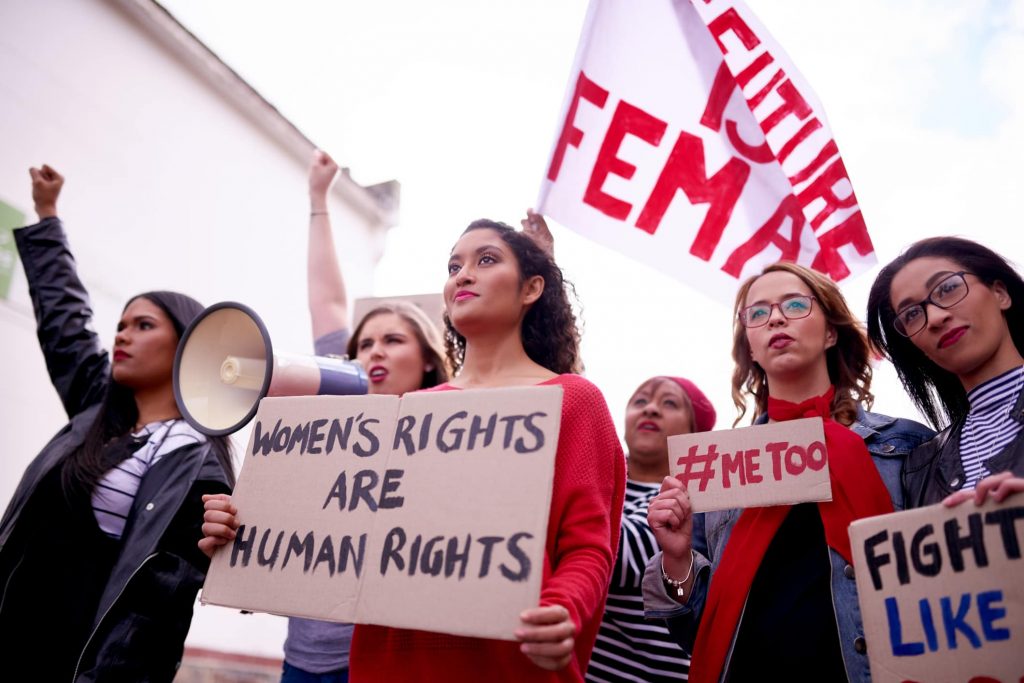Where Does India Stand on the Parameters Of Gender Equality?

“It is time that we all see gender as a spectrum instead of sets of opposing ideologies.”
WHAT IS GENDER EQUALITY?
A situation where everyone has the same rights and advantages to do anything and everything. It is about ensuring that every individual has an equal opportunity and is not treated differently or discriminated against anything because of their characteristics.
Gender equality is when people of all genders have equal rights, responsibilities, and opportunities. Everyone is adversely affected by gender inequality – women, men, trans and gender-diverse people, children, and families. It impacts people of all ages and backgrounds and does not contribute to the nation’s development and progress.
WHY IS IT IMPORTANT?
The growing awareness about the necessity of gender equality in India makes extremely prominent sense. Moreover, people are gradually realizing that equality is no longer a women-centric issue but an economic one. It is only possible in an equal society that organizations and nations will reach their fullest potential and prosper achieving greater heights.
Gender Equality prevents violence or anti-social behavior against citizens (especially women & children), it makes the nation strong and safe ensuring fundamental rights for its citizens are protected well. Thus, helping the nation to grow both economically and socially.
WHAT IS THE BIGGEST ROADBLOCK TO ACHIEVE GENDER EQUALITY?
In India, gender inequality is an outcome of unequal or biased opportunities that impact the lives of individuals irrespective of their gender.
There are risks, violations, and vulnerabilities; Historically, girls in our society face more discrimination because of their gender and are subjected to gender unfairness and social norms and practices where they are often exposed to the possibility of child marriage, early pregnancy, domestic work, poor education and health, sexual abuse, exploitation, and violence. Many of these signs will not change unless girls are valued more and made aware of their rights. Also, bringing equality is not the responsibility of any one gender but as a society, we all should contribute and treat everyone around us irrespective of any biases, caste, or creed.
WHAT CAN WE DO IT TO MITIGATE?
By realizing the value of every individual, we all can collectively contribute to the achievement of specific outcomes such as some short-term goals like increasing access & options for education, others mid-term goals may include ending child marriage or restricting with strict laws, and others long-term goals may include eliminating gender-biased sex selection, etc. Changing the perspective towards gender equality should include all (men, women, girls & boys). It must be mobilized in all possible sectors of society to spread awareness.
Only when society’s perception changes, and every individual understands the significance of gender equality will we be able to achieve the right balance.
INDIA AS A GENDER EQUAL COUNTRY
Gender equality in India is the most desired achievement and milestone, which our Nation has been craving to accomplish for a long time. Gender equality is not anymore a moral responsibility or a social cause, but it is also a social, and economic challenge. Gender Equality leads to human development and plays as a catalyst in the overall development of the Nation. INDIA being a Nation full of achievement, still lags few appreciations and milestones in the case of Gender Equality.
Discrimination between genders affects many aspects of an individual life, from career development and progress to mental health disorders. While Indian laws on rape, dowry, and adultery have women’s safety at heart and ensure protection, many highly discriminatory practices are still occurring at an alarming rate every day. Many of them don’t even get reported or culprits are given required capital punishments.
The achievement of gender equality in India implies changes for both men and women collectively. It is crucial not to overlook gender as an aspect of men’s or women’s social identity. It is certainly the right of every citizen in INDIA.
Gender equality in India is a term that is more than just an equal representation in society. It is strongly associated with women’s rights and often requires changes in policies or laws. Without a doubt, Gender Equality in India is the secret for all upheld success that our Nation deserves in the long run, it is the secret mantra for achieving the desired state of the Nation and continued success.
While we did see significant progress over the last few decades like More girls are going to school, and very few girls are forced into early marriage. Women are actively participating and serving in parliament, defense, and leadership positions, and the reformation of law is initiated to advance gender equality.
Some more examples include – Men and women being paid at par for the same kind of work and having no biases based on gender in the workplace.
From a healthcare standpoint, they get the same medical help, medicines, nutrition, support, etc.
In 2018, within the global context of the #MeToo and the Time’s Up movements, actress Tanushree Dutta shared her experiences of harassment in the Bollywood film industry and is said by many to have started and ignited the #MeToo conversation in India.
With the ever-growing movement and awareness in India, more and more women are speaking about their experiences of sexual harassment and gender-based violence and voicing their opinions on equality. It is an extremely important step towards a world where all genders are viewed and accepted as equal. But this does not mean that gender inequality no longer exists.
Despite this progress and people becoming more and more aware of gender equality, challenges continue to remain due to social norms, biased laws, etc.
Let’s commit to accelerating equality for all with meaningful actions to build an inclusive nation.
Abhrekha Jain Sahlot is a software professional, anchor, and blogger, creating a life of purpose, with the help of dreams and technology for herself and others around her









